This installment of the Monochrome Chronicles may be a bit off the track. Let me explain, starting with the title “Existential States.” Some readers may have an impression already what will be the subject of these photographs. Abandon any preconceived ideas. I’ll explain what I mean by existential states in due course.
Next I need to explain how this series came to be. Street photography was a major influence for me, especially during my early ventures in photography. This influence came about from two directions. One was via discussion of street photography in my courses at ICP and my reading about the work of famous street photographers. The other was actual practice – just go out onto the streets and start shooting. My experience with street photography started in NYC, continued after I moved to Japan, and influenced me as I began exploring other areas of Asia.
An unexpected trend crept in as I continued my attempts at street photography. Some of the images just didn’t fit the definition of street photography. I found them to be provocative but out of scope. Finally came the time when I started to review my street work retrospectively. Again some of the images remained outliers. This was difficult for me to comprehend. Late one evening the answer came to me. The people in these images were experiencing variations of the existential state. This concept began to flourish and the series “Existential States” emerged.
Let me add that existentialism is an enigma to me. That is not an apology, just an admission. Probably my first introduction to existentialism occurred when I discovered the work of Tennessee Williams in the mid-1970s. The beauty of Williams’ writing drew me into his world and yet the essence of his most poignant characters seemed to elude me. His dramas finally began to make sense after I read a review by one critic who claimed that Williams’ characters were haunted by existential feelings.
Similarly, some of the images from my street photography make more sense to me when I view them as representing existential states. I need to qualify that claim. How can I describe the images in terms of existential states when I’ve already admitted that existentialism is an enigma to me? Isn’t that an inconsistency? No, it is my dilemma. I define “existential states” according to my own interpretation. Some of the things I’ve seen on the streets in NYC and elsewhere, and some of the things I’ve experienced there make sense to me only in the observation “What is, is.” That is my definition of existential states.
Another element of the existential state is the belief that a person exists only in himself, only as an individual. That would seem to be impossible in cities like NYC with its population of some 8 million people, Tokyo (20 million) or Bangkok (11 million). But the aloneness of the existential state is psychological, not physical.
The existential state is difficult for me to describe in words. Maybe my photographs will express it more clearly.
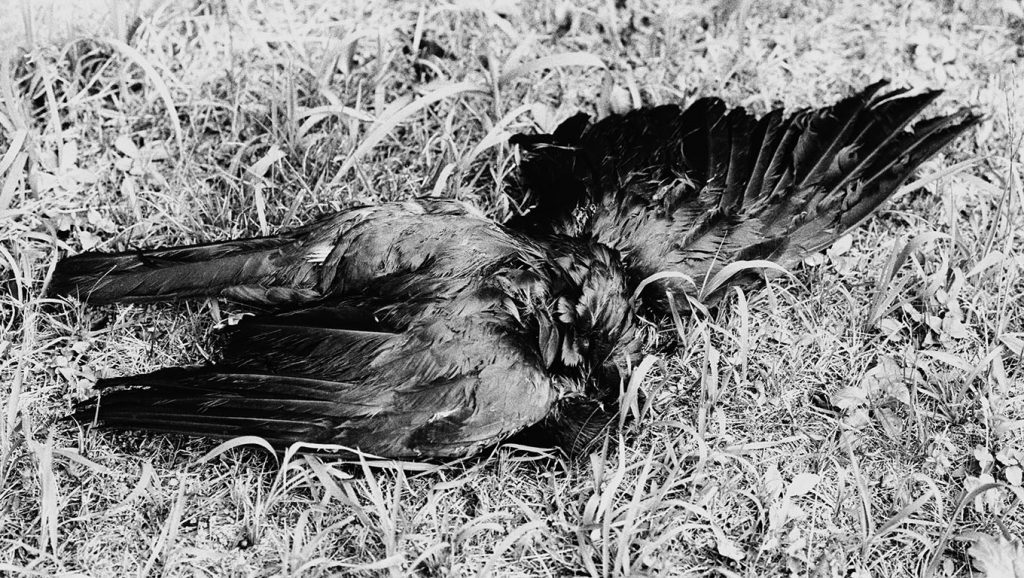
The location was a cemetery in Tokyo. The addition of one word, “cemetery” to the description re-directs the interpretation as a symbol. Absent that word, the image would contain no clues to the context.
For me, this is a very moving photograph. Emotionally moving. The splay of the wings suggests flight, as if the bird had been struck down in mid-flight. Life is fragile. One element of existentialism.
How odd it may seem to take a photograph of a dead crow, and especially in the context of a cemetery. The photograph is the result of a chance encounter. The motivation came from my little voice. Just a brief encounter turned into a lasting impression through the medium of black-and-white photography.

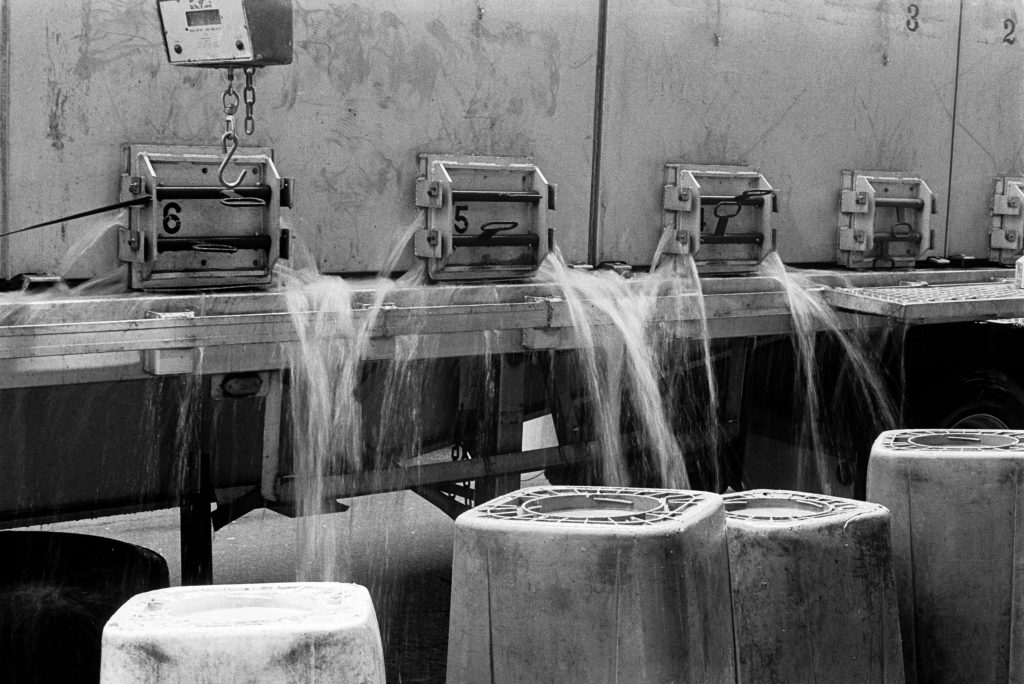
The other element of the photograph is the contradiction between stasis and motion. Such states cannot exist in isolation. Movement exists only in relation to a stationary condition. Movement also implies the passage of time.
This understated image lures the viewer’s imagination. Like many expressive photographs, it is deliberately ambiguous.
/
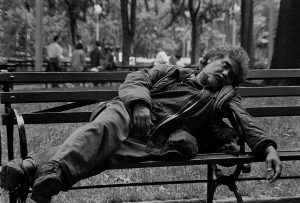
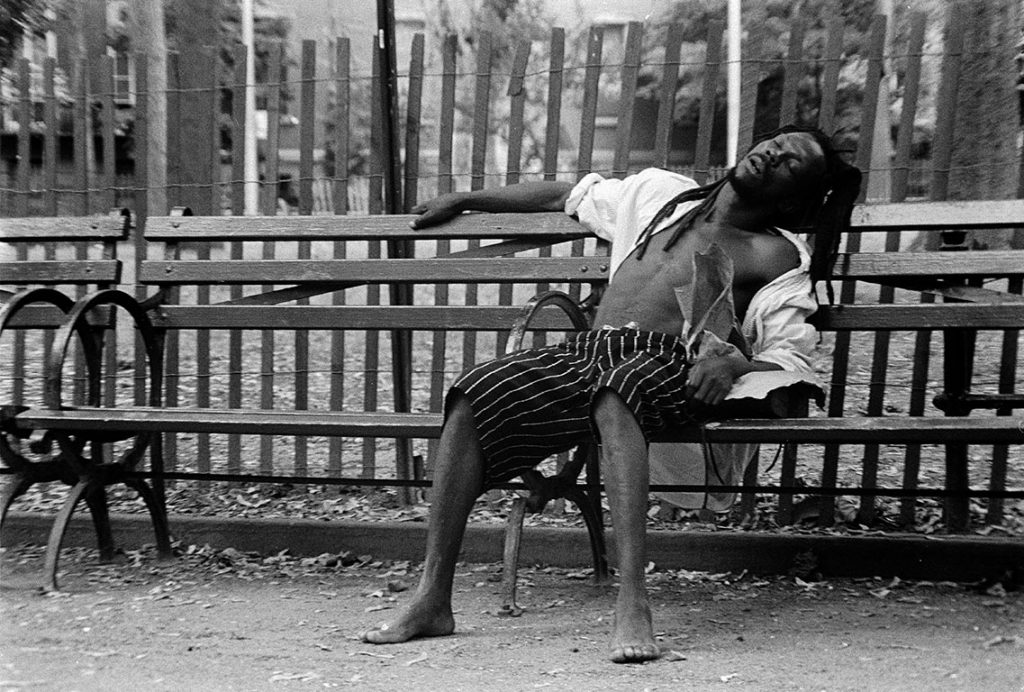
Autumn, probably the weekend. Many middle-aged men were dozing on the park benches under the midday sun in Washington Square Park. I wondered whether they were clients of the nearby methadone clinic. Don’t misinterpret my comment; no one has the right to judge another person; no one. The sunlight suffuses these images, transforming what otherwise would be a mundane scene into something painterly. It tends to mask the underlying story, which is revealed by the men’s body language and gestures.
The existentialism in these images stems from an element my own definition: “What is, is.” At the other end of the spectrum, these images might well depict nirvana and, if so, then who could resist? Here the temptation of titillation has turned into reality. And that is existential enough for me.

At the time I took this shot, I couldn’t…didn’t want to…get closer to find out more about this situation. My reaction at the time was that maybe he had AIDS and had been abandoned by his family. Now I can imagine other scenarios, like drug addiction or homelessness.
The existential state becomes a glaring reality in this photograph. It is an extremely powerful image that raises some ethical questions without a hint of any answers. It raises the long-standing photographer’s dilemma: should I only record this scene, or should I try to intervene?
This photograph is difficult for me to witness even now, 7 years later. It is a vivid evocation of the existential state.
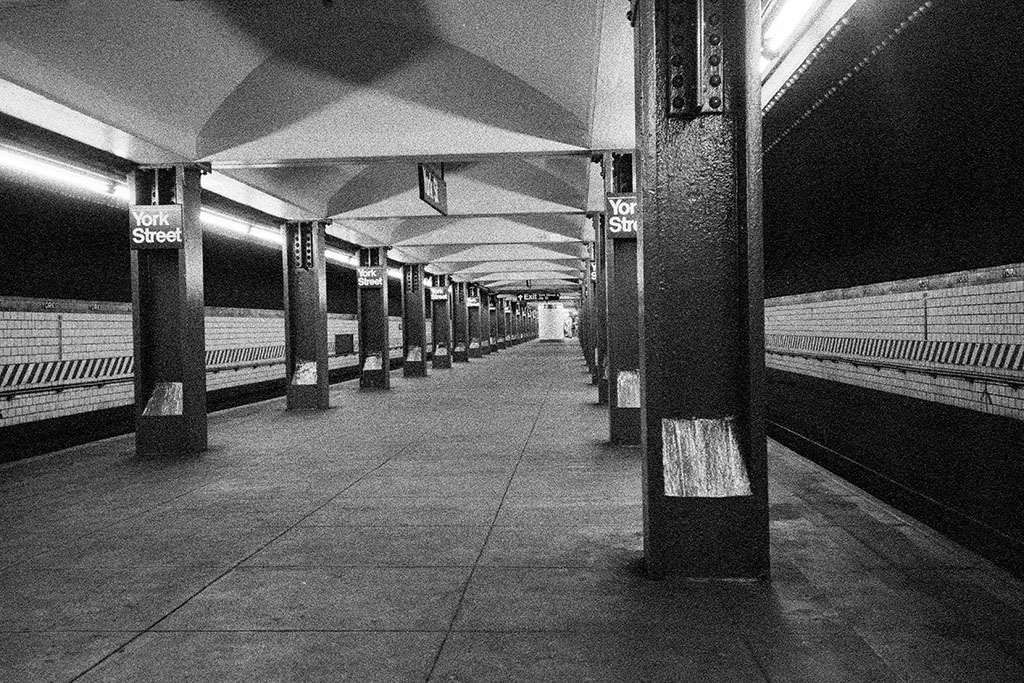
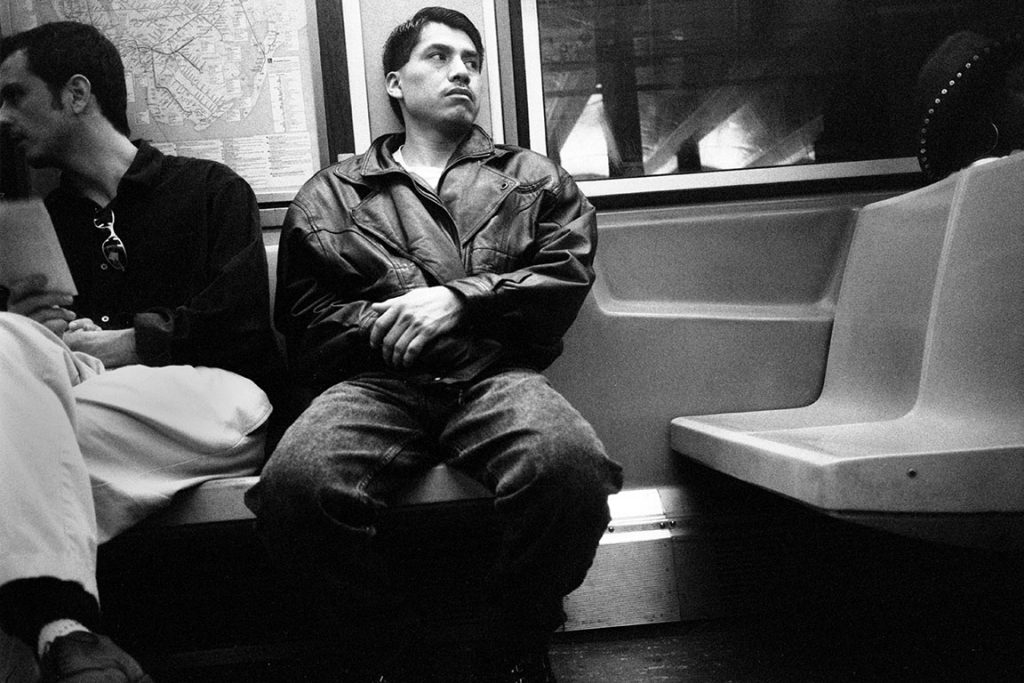



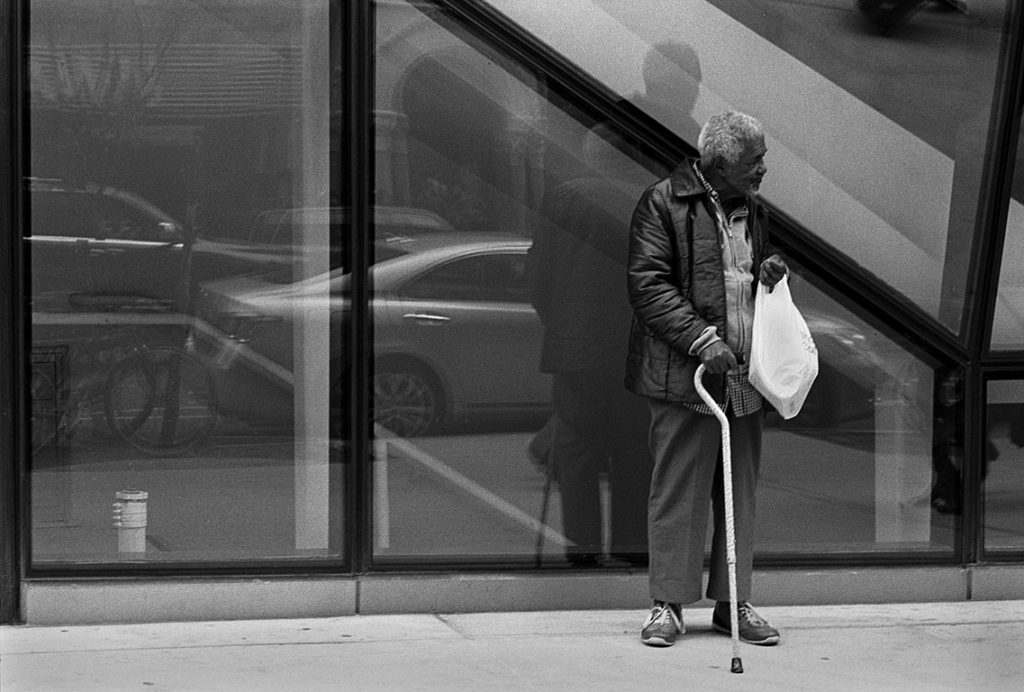
During my ventures in Southeast Asia, I encountered people experiencing what I perceive to be existential space. I have to be careful to qualify that statement. As a foreigner, as an outsider, understandably I would perceive many things as “different,” things that local residents would perceive as “same, same.” I have to remind myself that mine are merely observations, and not judgements. To take this logic one step further, it would be impossible for me to recognize the existential state under such conditions. With that caveat, let me show you some images that, to me, hint at such states.
Bangkok has become for me like a second home, sometimes as a destination and sometimes as a stop-over. Bangkok’s Chinatown continues to intrigue me as alien place within a foreign city. Chinatown’s main street usually is brightly lit with neon signs and thronged with people – locals and tourists alike. Just a mere block away, though, is an entirely different world, a second-hand-goods night market that also is home to many street people. The sidewalks are dimly lit and eerily quiet despite the traffic on the streets.

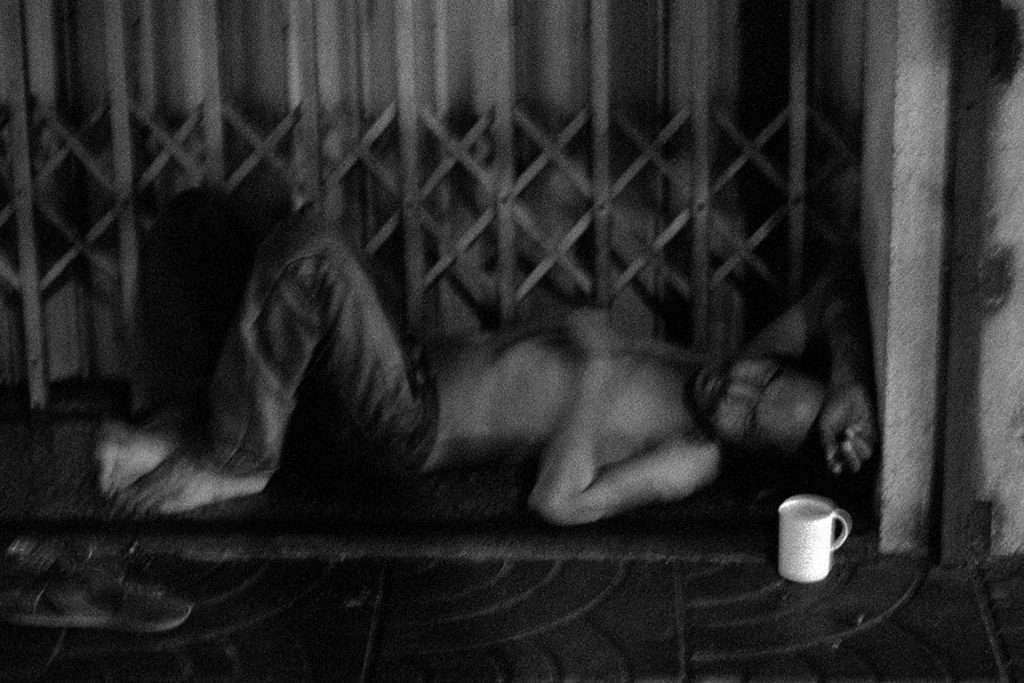
My feeling about both these images from Bangkok’s Chinatown is one of approach-avoidance. I have, at least by certain standards, broken social and cultural taboos. That doesn’t bother me, or maybe I can say that stepping across taboos somehow validates me. My take on these photographs is different. For me, photography is a means of exploration. These men exist. That is sufficient cause for me to create these photographs.
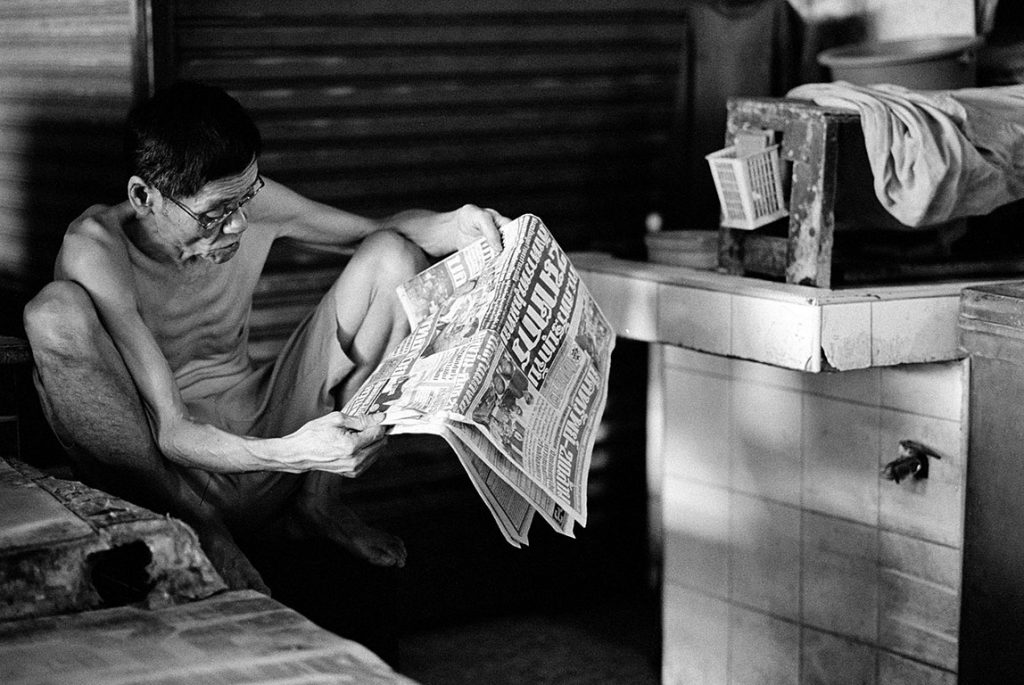

A literal description might be that this is a tired passenger waiting at a bus stop. The soft focus and the aura of ethereal light lead to alternative interpretations. One would be that even younger people sometimes experience the existential state. None of us is immune to it. It just exists.

My concept of the existential state, at least when I lived in NYC. The strength of this image is its simplicity. Parallel lines. Gradation from pure white to pure black through varying shades of gray. And yet, within the frame are many irregularities, too. The roughness of the stucco wall. The gradation of light on the wall from warm gray to cool black. The two scalloping lines, the lower one (the shadow) taking a dip as it passes the window. The lamp by the window and the pipe at the bottom introduce a mechanical element into the scene.
The message from this photograph could be stability and strength. On the other hand, I find a conundrum here. The wall, the window and the door could be keeping people inside. Or they could be preventing outsiders from entering. The atmosphere could be either comforting or threatening. Therein lies the existential state that is life in NYC.
Later, much later, I embarked on another, related series entitled “The Hole in the Universe,” which will appear in a subsequent chapter. I’m not sure I can explain how the two series are related, and fortunately I don’t have to explain. I suspect the explanation resides somewhere deep inside me, a subconscious influence on my photography.
Well, enough about me. My objective for the Monochrome Chronicles is to show you glimpses of what I’ve seen and where I’ve been, while following my camera and heeding my little inner voice. The photographs in this installment certainly fulfill that goal. A small part of me wishes to explore this terrain more deeply. Just wait for the episode “The Hole in the Universe” to see what else I’ve uncovered.